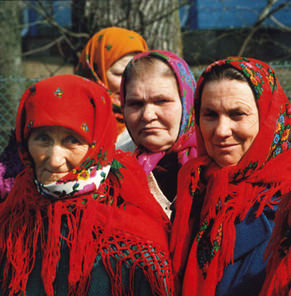Recent publications
Lessons learned from Living Conditions and Health Status of Populations living in affected territories after the Chernobyl and Fukushima accident - European SHAMISEN Project
- Details
- Category: Communications
- Published: Friday, 19 May 2017 10:13
MAITRE M., CROUAIL P., SCHNEIDER T. & al.
Lessons learned from Living Conditions and Health Status of Populations living in affected territories after the Chernobyl and Fukushima accident - European SHAMISEN Project
Third NERIS Workshop – 19 May 2017
Abstract
SHAMISEN is an European research project under the OPERRA project that aims to develop recommendations for medical and health surveillance of populations affected by radiation accidents, building upon lessons learned from experiences with populations affected by Chernobyl, Fukushima and other nuclear emergencies.
This paper presents the results of the review of the health and concerns of populations living in contaminated areas following radiation accidents, as well as the identification of the impacts on living and social conditions, and the worries, needs and expectations of the affected populations with regards to their health and welfare.
This main objective has been achieved through a description and analysis of specific case studies in different situations observed after the Chernobyl accident (Belarus and Norway) and the activities carried out after the Fukushima accident. It notably incorporates an analysis of testimonies of medical experts and local stakeholders from contaminated territories in Japan within two case studies as well as through a dedicated workshop jointly organised with Fukushima Medical University in Japan in March 2016. The analysis addresses the following topics:
- Expectations and worries of the people regarding their health and welfare
- Role of the different stakeholders (health professionals, RP professionals, local population, authorities, etc.)
- Contribution to well-being of the implemented actions and direct benefits for populations
- Sustainability and continuity of the projects/actions
- Ethical considerations
- Stakeholder participation, dialogue, information and communication issues
- Education and training provision and needs
Thus, this presentation outlines key lessons learned from each of these key topics, by providing tangilbles examples from the analysis of the various case studies (Belarus, Norway, Japan).
Among others, theses lessons learnt have been considered for the preparation of the final recommendations that will be shared and discussed with international stakeholders next March, at the occasion of the SHAMISEN final Workshop in Paris.
(A1285)

 CEPN is a non-profit organisation created in 1976 to establish a research and development centre in the fields of optimisation of radiological protection and comparison of health and environmental risks associated with energy systems.
CEPN is a non-profit organisation created in 1976 to establish a research and development centre in the fields of optimisation of radiological protection and comparison of health and environmental risks associated with energy systems.
